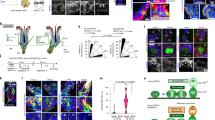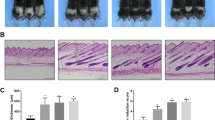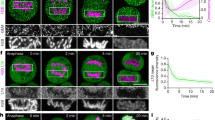Abstract
A STUDY of the cells of the hair cortex of rats1 showed that size changes of the nucleolus are not a reliable indication of changes in the rate at which cells are synthesizing proteins. The highest rate of protein synthesis was associated with the smallest nucleolar volume. It was not possible to demonstrate nucleoli in the cortical cells of the mid-keratogenous zone with specific stains for RNA.
This is a preview of subscription content, access via your institution
Access options
Subscribe to this journal
Receive 51 print issues and online access
$199.00 per year
only $3.90 per issue
Buy this article
- Purchase on Springer Link
- Instant access to full article PDF
Prices may be subject to local taxes which are calculated during checkout
Similar content being viewed by others
References
Sims, R. T., J. Anat., 100, 577 (1966).
Leblond, C. P., Pinheiro, P., Droz, B., Amano, M., and Warshawsky, H., Canad. Cancer Conf., 5, 19 (1963).
Brown, D. D., and Gurdon, J. B., Proc. Nat. Acad. Sci., 51, 139 (1964).
Sims, R. T., Physiology and Pathology of the Skin, 119 (Blackwell Scientific Publications, Oxford, 1965).
Sims, R. T., J. Cell Biol., 22, 403 (1964).
Downes, A. M., Sharry, L. F., and Rogers, G. E., Nature, 199, 1059 (1963).
Author information
Authors and Affiliations
Rights and permissions
About this article
Cite this article
SIMS, R. Synthesis of Nucleic Acids in Hair. Nature 213, 387–388 (1967). https://doi.org/10.1038/213387a0
Received:
Issue Date:
DOI: https://doi.org/10.1038/213387a0
Comments
By submitting a comment you agree to abide by our Terms and Community Guidelines. If you find something abusive or that does not comply with our terms or guidelines please flag it as inappropriate.



